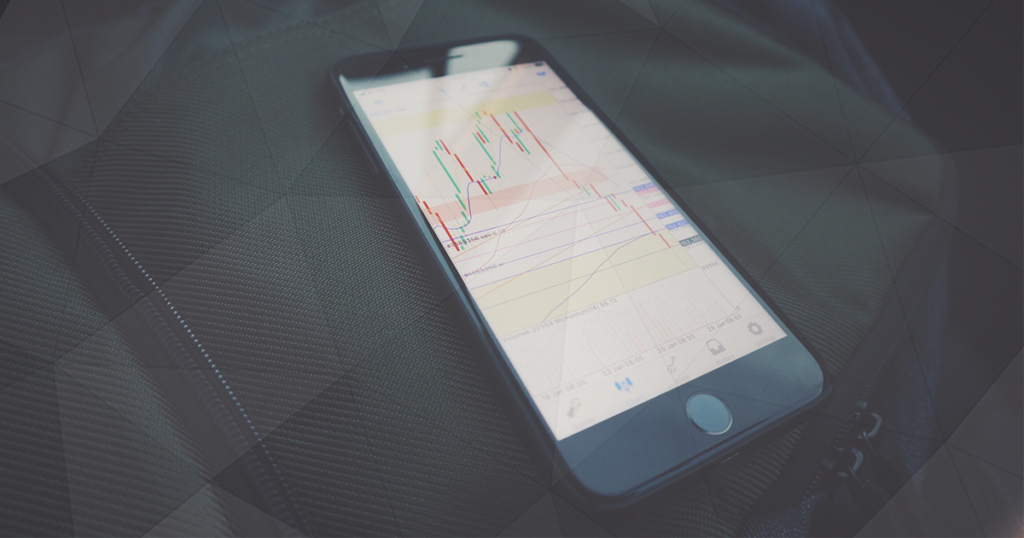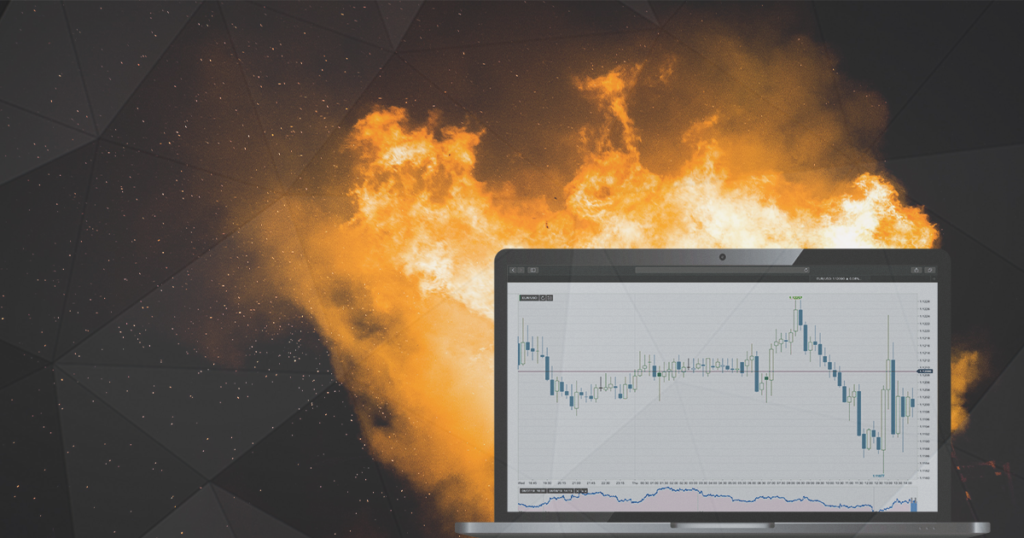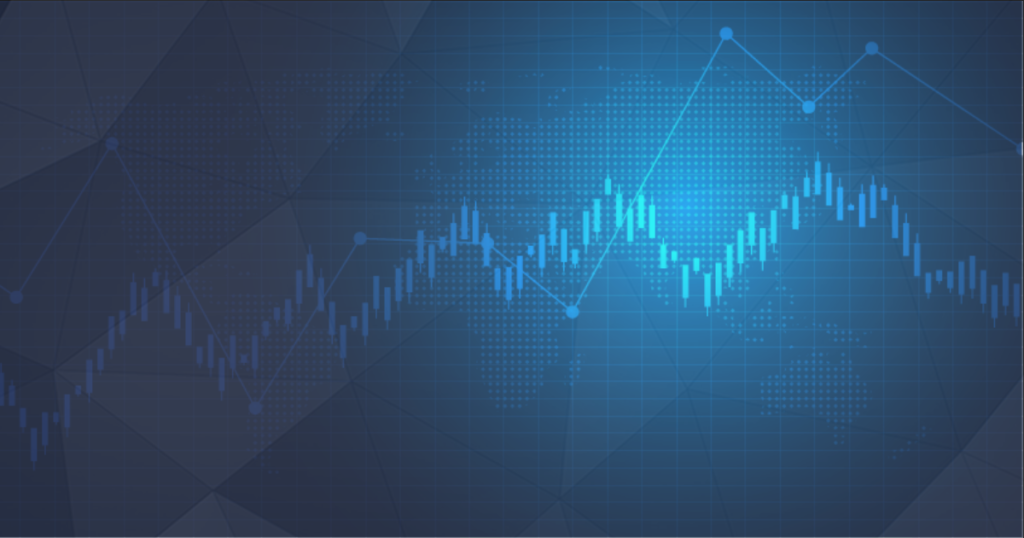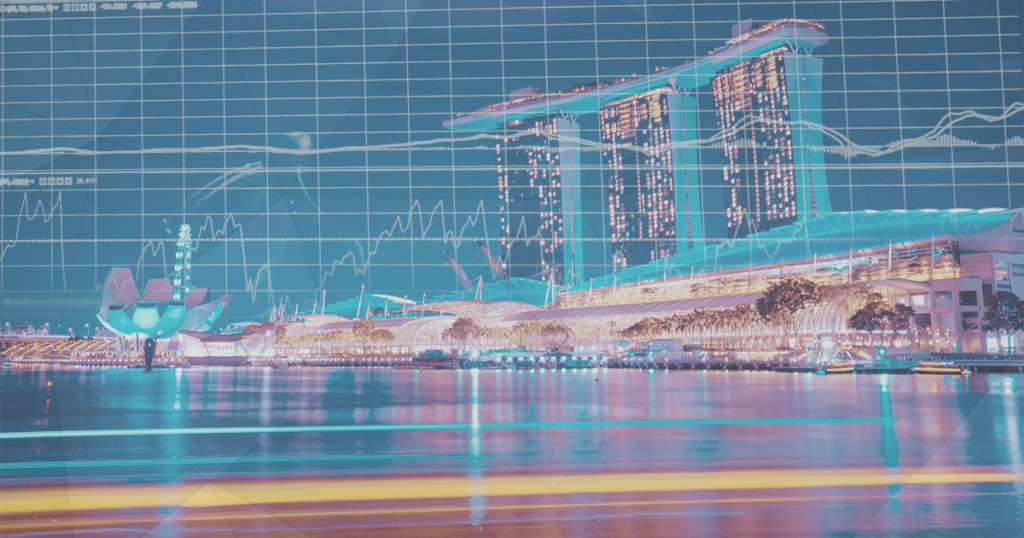4 Different Stages of a Market Cycle

Different business or economic environments often have a different impact on financial markets.
Knowing the current stage of a market cycle can not only provide accurate buying and selling opportunities but also give a tremendous advantage over other market participants.
In this article, we’re going to cover the main stages of market cycles, explain how they form and how you can benefit from them.
What are Market Cycles?
Market cycles refer to specific patterns in the market that form with shifts in the market or business environment. Some groups of stocks may outperform others during a market cycle if the cycle improves the stocks’ fundamentals, which is why it’s important for traders to identify the current cycle of the market.
It’s hard to measure the timeframe of a market cycle that is still active. For some traders, such as scalpers, a market cycle may last only 10 minutes, while for position traders a complete cycle may end after a year. On the other side, a Kondratiev wave or an Elliott wave supercycle may last up to 60 years.
A new market cycle often forms as the result of changes in the regulatory environment, technology, or new products. Earnings of affected companies often rise or fall during these periods and show a similar growth pattern.
While it’s quite difficult to pinpoint the beginning or end of a market cycle, they all go through the same stages and are cyclical in nature. All cycles rise in the beginning, peak at the top, dip and bottom out in the end. The end of one cycle represents the start of a new cycle.
Understanding how each stage of a market cycle works can make a real difference to your bottom line. As noted in the introduction, a market bubble is nothing more than a market cycle, and understanding the main characteristics of stages can help you avoid being caught off-guard.
- Learn more, take our premium course: Trading for Beginners
Main Stages of a Market Cycle
Market cycles go through four main stages: accumulation, mark-up, distribution, and downtrend stage.

Chart: Four stages of a market cycle in the S&P 500. Source: seekingalpha.com
#1 Accumulation
The accumulation stage is the first stage of every market cycle. It starts with the end of the previous cycle when the market has bottomed out and stock valuations show a low P/E ratio. This is the best time to buy in the market, as prices are low and a trend reversal hides behind the corner.
However, spotting the beginning of the accumulation phase is not an easy task as markets are generally still in a downtrend. A good idea to get a feeling of the current phase of the market cycle is to follow market news.
The start of the accumulation phase comes usually in times when the bearish sentiment is at its peak and traders run to sell their holdings, pushing the prices significantly down. However, value investors and smart money (hedge funds) start to buy those undervalued instruments and the downtrend begins to lose momentum.
Flows are becoming increasingly bullish and prices have difficult times to form fresh lower lows which also offers buying opportunities from a technical standpoint. Try to look for usual reversal patterns, such as inverse head and shoulders patterns, and double and triple bottoms.
- Learn more, take our free course: Reversal Price Patterns
#2 Mark-Up
During the mark-up phase, markets start to consolidate and prices begin to move higher, attracting a large number of buyers who want to join the new uptrend in its early stage. Since prices start to form fresh higher highs and higher lows, technical tools also start to send buying signals and the general market sentiment begins to change.
Spotting the mark-up phase is somewhat easier than identifying the accumulation phase. News articles become more optimistic and the buying pressure continues to push prices higher.
Near the end of the mark-up phase, buyers are waiting for any sign of a price-correction to enter the market at more favourable prices. The late majority of buyers are stepping in, push valuations to record-highs and give the market one last push higher.
This new wave of buying orders is usually used by early buyers and the smart money to get out of their long positions as market sentiment turns from bullish to euphoric, signalling the end of the mark-up phase.
Traders can take advantage of the mark-up phase by riding the uptrend as long as it lasts. Technical traders may use trend-following strategies and buy at each higher low during the uptrend, while fundamental traders may get their buying signals from improving market news and higher company earnings.
Read: How to Enter Price-Action Trades
#3 Distribution
At the end of the mark-up stage comes the distribution stage, identified by the absence of fresh higher highs and a slowing buying momentum.
During the distribution stage, prices are often ranging for a long period of time, as each buying order gets immediately matched with a selling order, i.e. there’s an equal power distribution between buyers and sellers. The bullish market sentiment that pushed prices higher during the mark-up stage starts to vanish and turns neutral.
Technical traders can identify a distribution phase by the formation of classic reversal patterns, such as head and shoulders patterns, double tops, and triple tops. This is a great time to sell in the market, as prices reached new record-highs and valuations are at their extreme.
Fundamental investors usually stay at the sidelines and avoid to add to their long positions, waiting for a deterioration in economic fundamentals to take profits and sell their holdings. At the end of the distribution stage, economic news starts to come in lower than expected and market sentiment begins to turn bearish.
Read: How to Short in the Market Long Term
#4 Downtrend
The final stage of a market cycle is the downtrend or mark-down stage that follows the distribution stage.
As market sentiment becomes increasingly bearish, investors start to sell their holdings and lock profits that increase selling pressure in the market. Other market participants quickly follow, sending prices lower and creating a downtrend in the market.
While prices start to form fresh lower lows and lower highs, some market participants who have bought at the peak of the mark-up or distribution stage still hold to their holdings, hoping prices will continue to rise.
Unfortunately, prices keep falling on deteriorating economic fundamentals and high selling pressure, pushing stock valuations down and providing a buying opportunity for investors who’ve been able to identify the end of the downtrend. At this point, the accumulation stage begins to form and a new market cycle starts over again.
- Take our free course: Technical Analysis Explained
- Take our free course: Trends, Support & Resistance
- Take our free course: Japanese Candlesticks Decoded
- Take our free course: Reversal Price Patterns
- Take our free course: Continuation Price Patterns
- Take our premium course: Trading for Beginners
How Long Do Market Cycles Last?
As noted earlier, market cycles can last from a few minutes to a few decades, depending on the timeframe of the trader.
For a scalper or day trader, a complete cycle can be completed in a few minutes or hours, while position traders and long-term investors find cycles that last from a few years to a few decades more useful for their decision making.
An interesting example of market cycle timing is the so-called presidential cycle that lasts four years. In the first two years of a political party’s mandate, policymakers are usually consolidating fiscal expenses.
As the election date comes closer, politicians try to stimulate the economy with lower interest rates or large state projects which should attract people to go to the polls.
Final Words
Traders who have a profound understanding of the different stages of market cycles have a great advantage over other traders.
While it’s exceptionally difficult to identify the bottom of an accumulation stage or the top of a mark-up stage, traders can benefit from following the overall trend and sell their holdings once the uptrend shows signs of a slowdown, i.e. the market enters the distribution stage.
At this point, some traders with an aggressive trading approach may also short-sell the market and benefit from the lower prices during the downtrend stage.
Try to spot important reversal patterns, such as the inverse head and shoulders, double, and triple bottoms that usually form at the beginning of a new accumulation stage, and bearish head and shoulders, double, and triple tops that often form at the top of the mark-up stage.
- Learn more, take our premium course: Trading for Beginners





